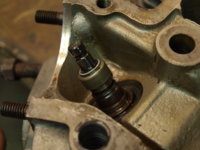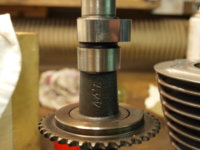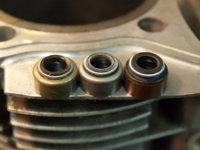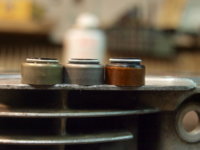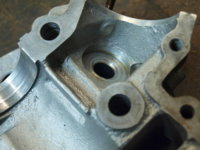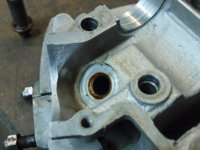BigBoreSwede
XS650 Addict
Hello.
Okay, so I´m tearing apart my top end and this is what I found. 2 busted valve stem seals. Nothing funny about that. The engine is old
But there is 2 things that does´nt seem right!
1. The seal at the pic looks funny. It totally broken and I have found pieces from it all over in the engine. Springs and a piece that seems to be the metal shell that wraps around the acctual seal itself.....hope you know what I mean
2. The valve guide where the broken seal is does´nt flush against the casing. You can barely see it......but it´s there. Hard to get a pic of that.
So the question is.....is it possible that the guide has something to do with the broken seal??
Maybe the bottom of the spring cap can break the seal when the guide is set a little higher?
Thanks/BigBoreSwede
Okay, so I´m tearing apart my top end and this is what I found. 2 busted valve stem seals. Nothing funny about that. The engine is old

But there is 2 things that does´nt seem right!
1. The seal at the pic looks funny. It totally broken and I have found pieces from it all over in the engine. Springs and a piece that seems to be the metal shell that wraps around the acctual seal itself.....hope you know what I mean

2. The valve guide where the broken seal is does´nt flush against the casing. You can barely see it......but it´s there. Hard to get a pic of that.
So the question is.....is it possible that the guide has something to do with the broken seal??
Maybe the bottom of the spring cap can break the seal when the guide is set a little higher?
Thanks/BigBoreSwede



